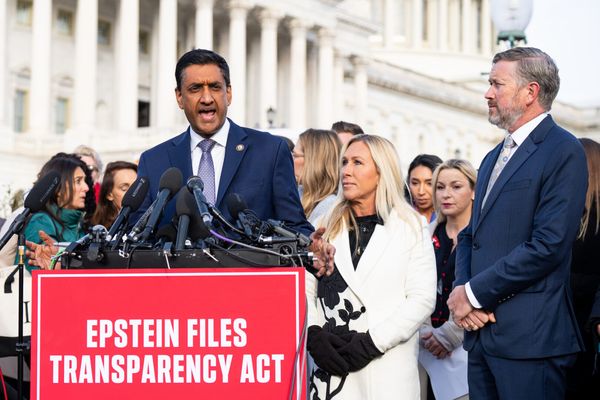
Ethiopia has inaugurated Africa’s largest hydroelectric dam, a project that could transform the country’s energy sector but may also aggravate tensions with neighbouring Egypt.
State media showed the Ethiopian prime minister, Abiy Ahmed, touring the site of the Grand Ethiopian Renaissance Dam (GERD) in Guba district with the Kenyan president, William Ruto, the Somali president, Hassan Sheikh Mohamud, and the African Union chairperson, Mahmoud Ali Youssouf.
“To our brothers, Ethiopia built the dam to prosper, to electrify the entire region and to change the history of black people,” Abiy said in an address to dozens of dignitaries during a ceremony at the site in north-western Ethiopia. “It is absolutely not to harm its brothers.”
He was referring to Egypt and Sudan, which have expressed concerns about a likely reduction of flow downstream.
Along with the White Nile, the Blue Nile is one of the two major tributaries of the Nile. Construction of GERD started in 2011, with more than 25,000 people working on site.
Towering 170 metres (550 feet) high and stretching nearly 2km (1.2 miles) across the Blue Nile, the dam is designed to hold 74bn cubic metres of water and generate 5,150 megawatts of electricity, which is more than double the country’s capacity.
The megastructure is the largest by power capacity in Africa and among the 20 largest hydroelectric dams in the world.
It cost $5bn (£3.7bn), with Ethiopia’s central bank providing 91% of that figure and the rest coming from Ethiopians through bond sales and gifts, local media reported.
But the project is a source of tension and diplomatic feuding with downstream countries, with neighbours critical of the project from the onset.
Egypt, which has a population of more than 100 million and experiences little rainfall, depends on the Nile for 97 percent of its water needs and fears lower supply during drought.
The country, which constructed Aswan High Dam on the Nile in the 1960s, argues that GERD violates water treaties dating to the British colonial era. Its president, Abdel Fattah al-Sisi, has repeatedly termed GERD an “existential threat” and vowed that Egypt would defend its water security.
“Whoever thinks Egypt will turn a blind eye to its water rights is mistaken,” he said last month.
Tamim Khallaf, spokesperson for Egypt’s foreign ministry, told Reuters on Monday that Egypt would continue to closely monitor developments on the Blue Nile and “exercise its right to take all the appropriate measures to defend and protect the interests of the Egyptian people”.
Amid the standoff, Egypt has strengthened ties with Eritrea and Somalia, which have tense relations with Ethiopia.
Sudan has joined Egypt’s calls for legally binding agreements on the dam’s filling and operation, but could also benefit from better flood management and access to cheap energy.
Ethiopia insists that the project’s development is a sovereign right, and the government has in the past said the dam would not significantly harm downstream countries.
“The Renaissance dam is not a threat, but a shared opportunity,” Abiy told parliament in July. “The energy and development it will generate stand to uplift not just Ethiopia.”
Independent research shows that no major disruptions have so far been recorded to downstream flow – partly due to favourable rainfall and cautious filling of the reservoir during wet seasons over a five-year period.
Reuters and AFP contributed to this report







